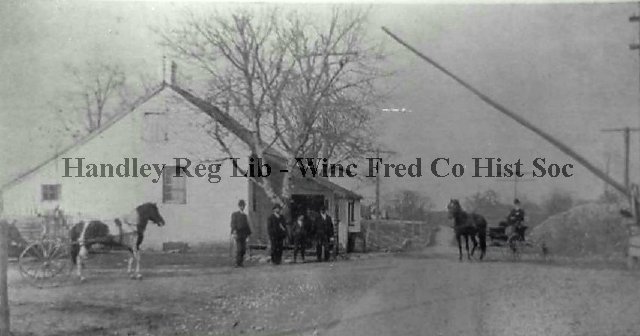The further we have progressed in captioning images on our Flickr, the greater the sense that everything in Winchester is connected in some way. To those who are students of history, this game of six degrees of separation often leads to some of the most interesting and unusual chains of research – probably not what you intended to find, but nevertheless an amusing, entertaining, or educational footnote to liven up family and property histories.
One such rabbit hole of research was uncovered when a fairly innocuous and straightforward-looking photo came up in our randomizing program. After the direct image explanation, where the matter would have been deemed complete for most, a bit more investigation led to looking at the chain of title for previous owners. As this was a house bought and sold through PHW’s Revolving Fund, Katie Rockwood had completed research as far back as she could on the property. There was, however, a curious gap in the title chain between the purchase of the lot by Michael and John Copenhaver in 1796, and the transfer from Simeon Hillman to Emily Knight in 1860. That is quite a sizeable gap in time, suggesting some kind of unusual transfer took place between the Copenhavers and Hillman.
With that oddity noted, a bit of research began on Simeon Hillman, as the name was vaguely pinging a memory of other local history. The first note, unsurprisingly, in Cartmell’s Shenandoah Valley Pioneers and Their Descendants, was that Simeon Hillman was part of the local reserves for the War of 1812. Many of the homes near the intersection of Kent and Clifford streets have a War of 1812 connection, so that was a pleasant confirmation, but not quite the memory or the ah-hah moment.
Next, records for Simeon Hillman were checked in the census available through the Handley Library. Here the real lead began – toll-keeper was his stated profession. Although it seemed likely this was the Simeon Hillman in question, we continued to laterally research to find corroborating evidence. An “Out of the Past” article reprinted in the Winchester Star gave the family memory of the Hillmans beginning their toll-keeping career in 1840. Simeon died in 1860, leaving the business to his wife, Charlotte, who continued until her death in 1892. In a twist for most stories, Charlotte Hillman is the more recognizable name of the two, as her counting of soldiers passing through the gate during the Civil War to turn in – and receive – payments for the tolls from Washington is a well-known tale from that era.
While that alone is a notable find and makes the story of 211 S. Kent more relatable, there was still the question as to how Simeon Hillman acquired it from the Copenhavers. While it could be an association of the families through the War of 1812, it seemed likely there was something else, too. The further lateral research continued, this time on Charlotte. Knowing her death year, it was possible to search for her on the Find a Grave website, which turned up a piece that brought the search full circle. Her maiden name was Copenhaver. Through the family connections available on the website, we learn Charlotte was the daughter of John Copenhaver. While the exact method and date of transfer is not known, the connection from John Copenhaver to Simeon Hillman, at least, is there through Charlotte.
While there are certainly more jumping off points for future research on 211 South Kent, the point that will tie many items together in the six degrees of Winchester history is, of course, the Valley Pike, the road where Simeon and Charlotte Hillman and later their descendants were toll-keepers. Although the home Simeon built at the gate was demolished, at least a piece of the family property still lives on Kent Street.


